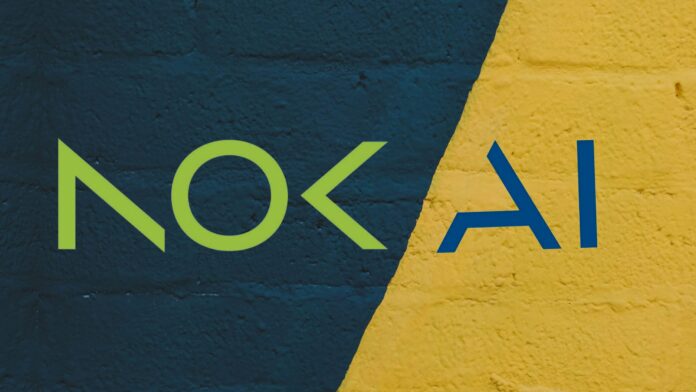Hannover Messe, Germany: Nokia has introduced a new ‘micro-edge’ compute solution to process industrial AI/ML workloads on or adjacent to IoT sensor devices attached to private LTE/5G networks, and also to enterprise Wi-Fi networks. At the same time, it has introduced a new video AI solution for asset tracking and positioning in Industry 4.0 sites, plus a couple of blueprint-guides to help manufacturing and logistics companies get their industrial edge-5G projects going.
The new far-edge compute solution, called MX Grid, is part of the Finnish firm’s broader Industry 4.0 platform, dubbed Nokia ONE (or ‘one’), designed to go, ostensibly, with its MXIE industrial edge and DAC private wireless DAC propositions Where the MXIE platform provides an on-site edge compute engine to run Industry 4.0 workloads next to its DAC core network, the new solution enables compute functions to operate either on industrial devices themselves, or else on a “pool of orchestrated compute capable field devices” (‘micro-edges’) sitting between the machines / sensors and the MXIE edge-server.
In the latter scenario, it enables low-latency AI/ML apps to run closer to legacy OT machines. It works with another of Nokia’s developing family of MX/ONE tools for Industry 4.0, a performance booster called MX Boost, patented by Nokia Bell Labs, which plugs into the MXIE platform and offers enterprises a control window to aggregate their cellular LTE/5G and Wi-Fi 6/6E resources to boost throughput and reliability (‘determinism’) by combining radio links or switching between technologies for the strongest network performance.
Nokia explained in a statement: “Today most AI/ML assets run in cloud environments. With MXIE, Nokia introduced OT compliant AI/ML processing capabilities on-premises, whereas MX Grid brings this capability even closer to the OT data source. MX Grid leverages a pool of orchestrated compute capable field devices with a specialized, AI-capable software stack. These micro-edges are connected by private wireless networks and/or reliable Wi-Fi using MX Boost.”
The company called it “the world’s first on-premise hyperconnected [and] decentralized AI/ML processing platform”. It said the solution enables a “more effective implementation of a wide range of mission- and life-critical industrial applications, including predictive maintenance, security and surveillance, worker safety, tracking and positioning, and quality assurance”. Nokia provided a couple of illustrative examples, for quality assurance and worker safety.
In both cases, the point is to accelerate AI decisions by bringing the compute closer to the action; the application on the micro-edge analyzes data and triggers an “immediate action” closer to the source, or else lets the MXIE peer application take charge to run deeper analysis of the data for a “corrective action” shortly after. “This results in improved latency and optimized network load… or improved worker safety and contextual awareness”, said Nokia, according to the use case.
Nokia has also introduced a visual position and object detection (VPOD) app on its MXIE platform, which works for connected workers (as above) with the MX Grid architecture. It uses edge AI on private LTE/5G to analyze camera feeds for asset tracking; positional data can be collected via Nokia’s own Bluetooth-based high-accuracy indoor positioning (HAIP), or from and third-party tracking and positioning solutions running on MXIE, such as HERE HD GNSS or Nordic ID.
The VPOD solution draws on patented Bell Labs tech, too. It processes data within the customer’s closed private edge-network, to ensure compliance with privacy and security regulations. Facial recognition software is not used within the Nokia VPOD solution. Its output will also be utilized in Nokia’s new generative AI industrial assistant, MX Workmate, to bring further insight, said Nokia.
The company stated: “In complex industrial environments it is often difficult to equip machinery and tools with active tags and challenging for people to wear and maintain those units (because of battery changes, faulty units, and so on). VPOD provides another source of industrial contextual awareness data, which is made available through APIs, for example for use by third-party applications running on the MXIE on-premise edge compute platform.”
In a press note, Nokia quoted analysis from Omdia that data pre-processing is increasing at the industrial edge, on or near OT devices. Omdia predicts growth of 11.3 percent for data processing in converged industrial edge setups in the period to 2027. Omdia suggested “connected edge nodes… are the true enablers of industrial digitalization”, and also that the MX Grid solution is a “transformative decentralized AI/ML processing platform”.
Nokia stated: “Newly connected nodes with converged functionalities… [are] driving industrial digitalization and IT/OT convergence”. Stephan Litjens, vice president of enterprise campus edge solutions at Nokia, said: “Lower latency and improved responsiveness… is imperative [for Industry 4.0].” He said of the VPOD solution: “Nokia VPOD… is the first solution to make [real-time positioning] possible at scale through patented algorithms and full lifecycle management.”
Meanwhile, Nokia has also announced new “pre-tested and pre-integrated segment solutions”, like blueprints, for manufacturing and logistics, covering strategy, applications, and investments. It has already produced the same for ports, mining companies, utilities, and airports. It said: “The concept leverages Nokia’s extensive expertise developed through more than 30 years of delivering critical communications solutions and systems integration for enterprise digital transformations.”
It took the opportunity to re-state/update that it has deployed private networks for 730-odd customers, and provided a quote from US industrial heavyweight Rockwell Automation to back up the thinking. Matt Hoover, global product manager for wireless and industrial IoT at Rockwell, said: “Embarking on the digitalization journey can be a daunting prospect. You need to understand your application requirements and get started with initial projects so you can quantify the benefits.”
He went on: “Gaining management approval is the next step and working with a proven vendor like Nokia is critical. Creating a roadmap that clearly shows how vital operations are maintained during the transformation, as well as how to achieve benefit or ROI is key. Using a pre-tested and pre-integrated solution from Nokia can reduce the risk of implementation and guide companies every step of the way.”

